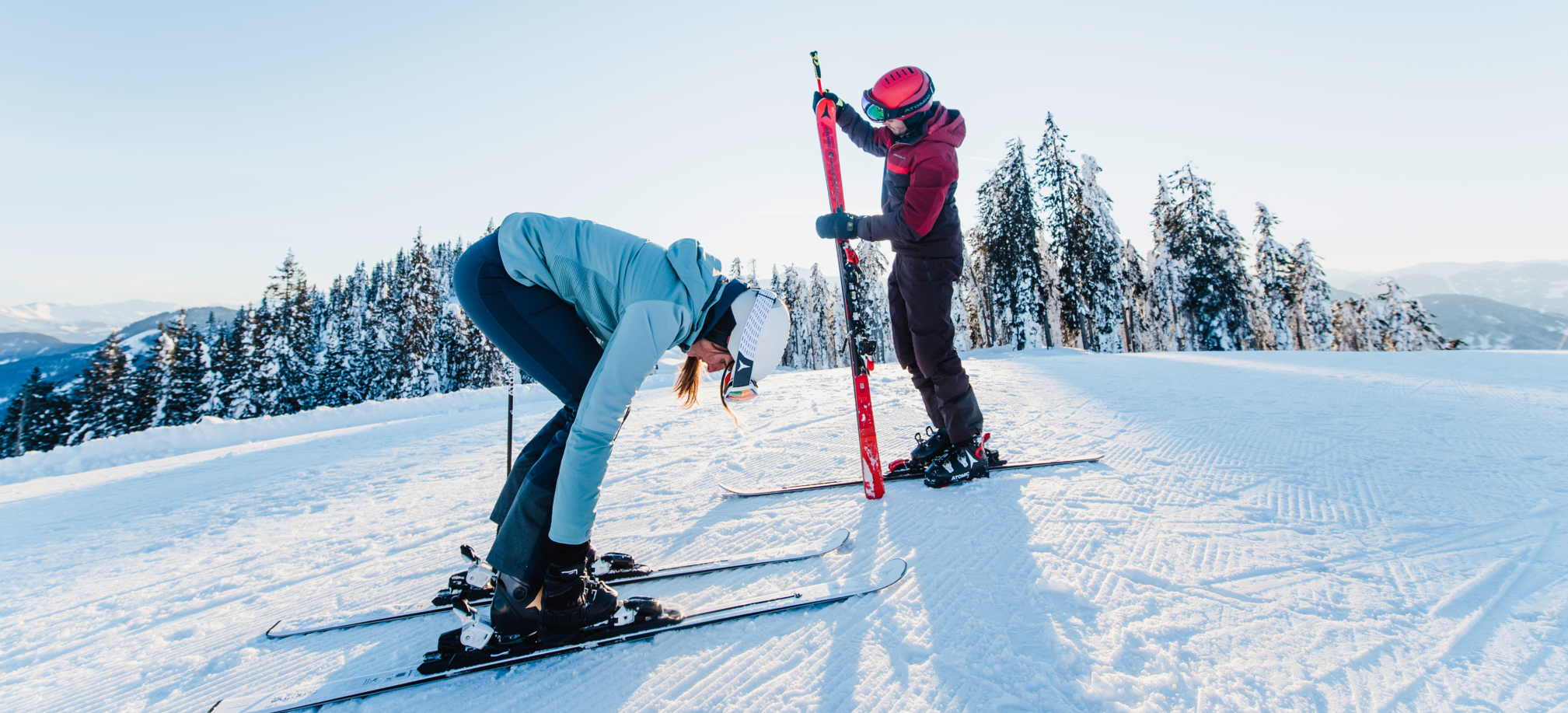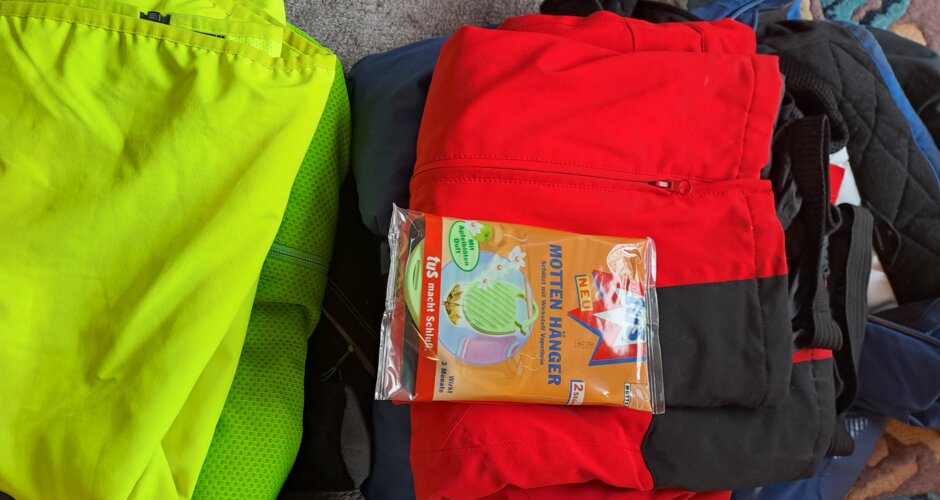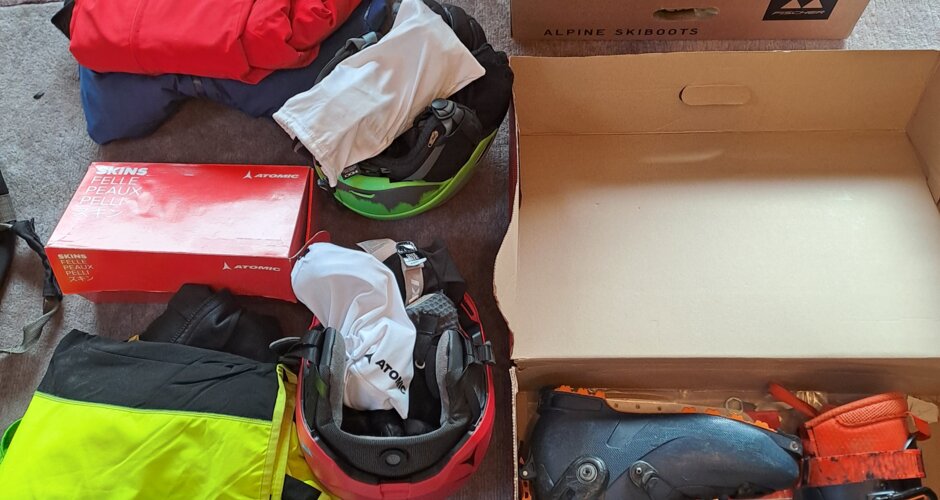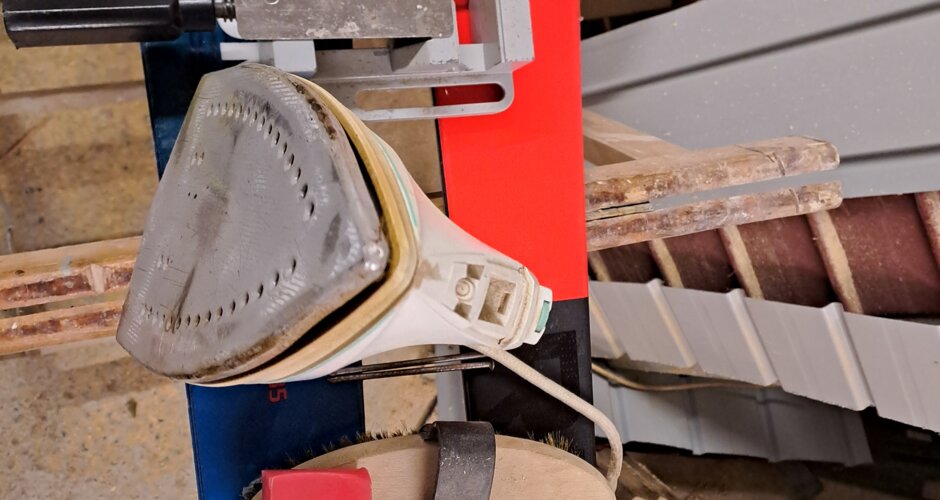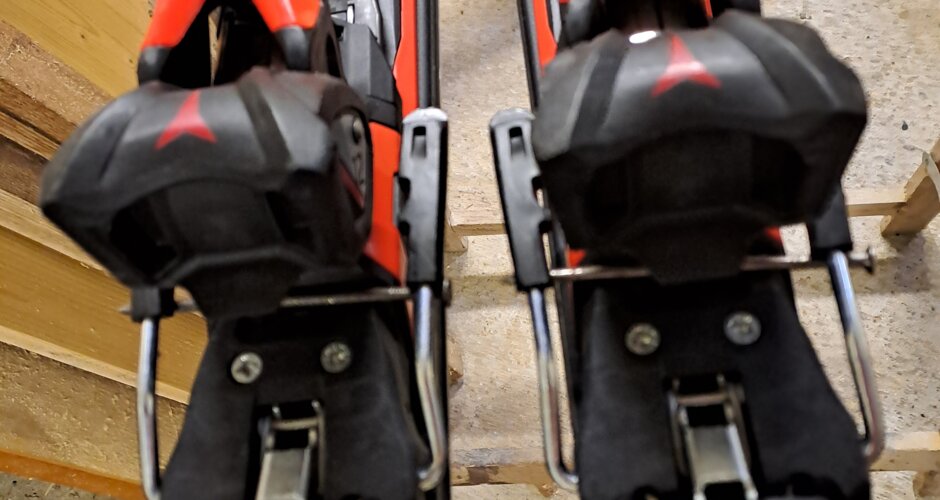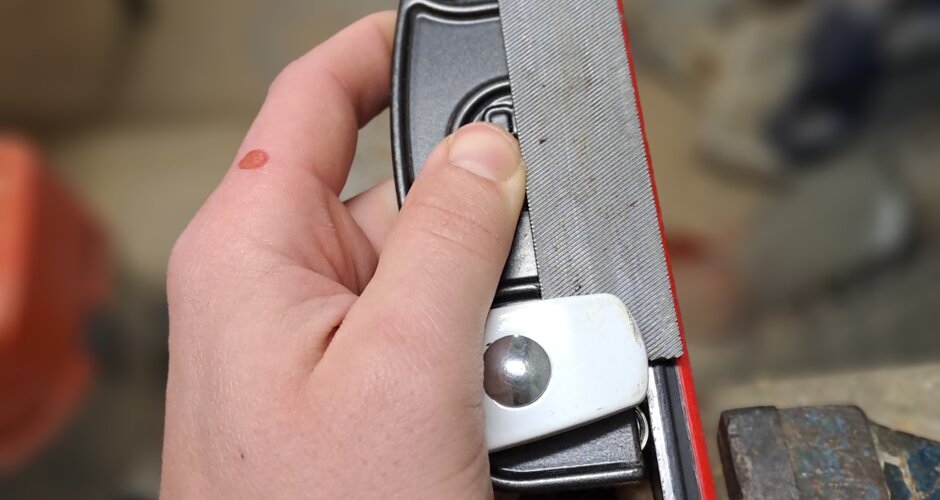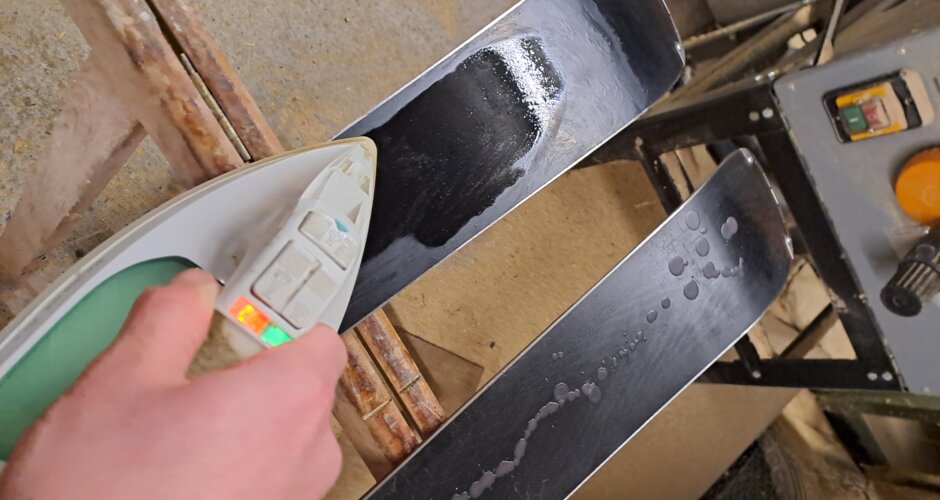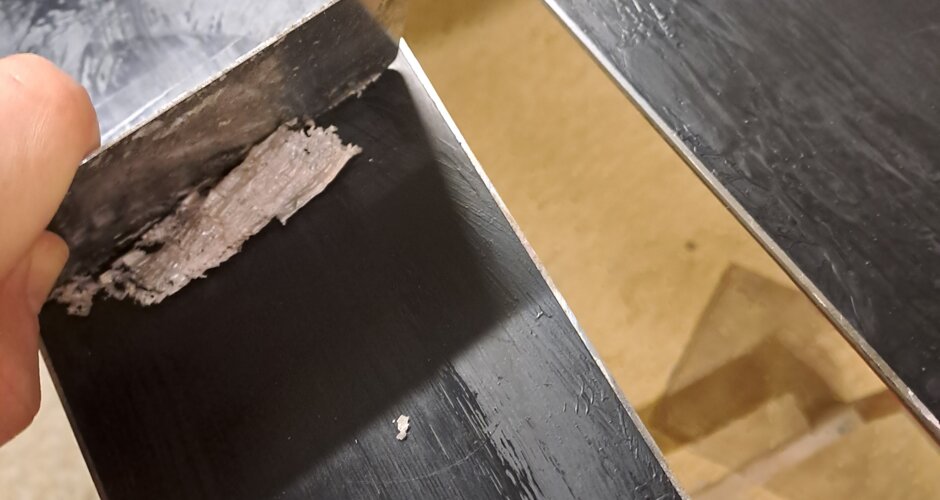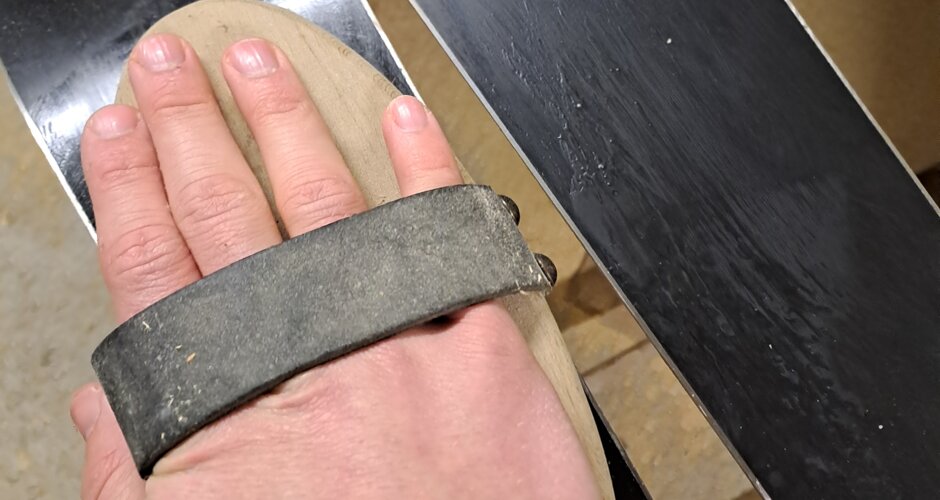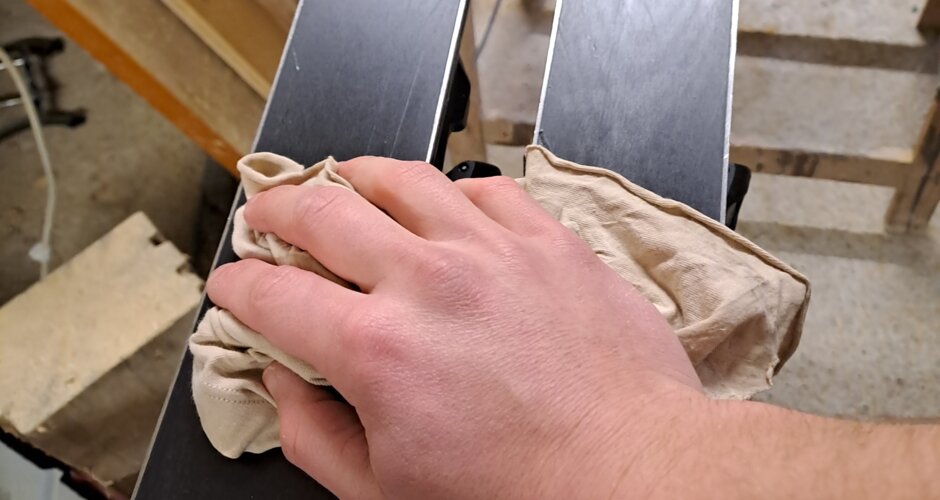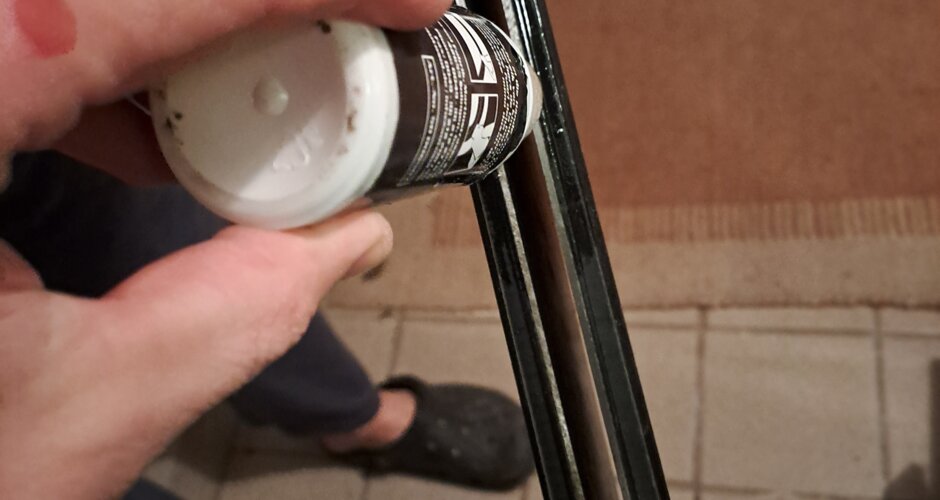Clothing
All items of clothing that I wear next to my skin, such as ski jumpers, ski underwear or ski socks, are washed straight after I wear them anyway and are therefore always fresh. The ski suit and gloves are washed once a season if they are not dirty. This means that at the end of the season I either take it to the dry cleaners or wash it myself in the washing machine once, as described. Then let it dry thoroughly and hang the ski suit upside down in the wardrobe. I put the gloves inside. If you want, you can hang a moth tag on it safety first - however you like.
Hardware
I wipe the helmet and poles well once with a damp cloth. I leave the helmet outside the house in the fresh air for a good day, then put it in a helmet bag and store it well. Ideally in the original cardboard box, where it can be stored nicely.
Simply clean the skins, stick them onto the plastic film, roll them up and pack them in the box. If the skins are no longer sticking properly, you can watch a YouTube video on how to re-stick the skins. It's easier to go to a sports shop and have the skins re-glued. I have already done this myself and it worked perfectly.
The skis take the most time. They are first cleaned on the surface with a cloth, as are the bindings and all plastic parts. Next, the skis are clamped in a vice and the stoppers are clamped out of the way using a rubber band or nail. To protect the surface, it is advisable to insert a rubber band or a piece of wood between the vice and the ski.
Then pick up the edge grinder, set the angle and grind the edges. With good equipment, you can choose an angle between 86 and 90 degrees. If you ski very well and want a biting grip, then an angle between 86-88 degrees is recommended, otherwise an angle of 89-90 degrees is sufficient. But please consult a professional before choosing the perfect angle for you.
Once you have sharpened the edges, turn the ski 90 degrees so that the base is facing upwards. Then take the ski wax and an old iron. Carefully drip the desired amount of wax onto the ski and spread the wax evenly over the entire ski using the iron.
As soon as the wax has cooled down completely (after about 5 minutes), grab your scraper blade - use it to remove excess wax by dragging it from top to bottom over the ski.
Finally, brush the wax into the base with a brush - I do this in several passes - 4-6 passes from top to bottom. Then wipe everything off with a microfibre cloth.
The last step is to lubricate the edge with Vaseline (acid-free grease) to protect the edges from rust over the summer.
You can do the same for the touring skis.
Congratulations - you have prepared your skis yourself! :)
If you are unsure, you can also take the skis to one of the many sports shops in and around Ski amadé, where the professionals will be able to help you.
PS: These are all my personal experiences after 15 years of skiing. I was taught this - whether my way is right or wrong remains to be seen. Many roads lead to Rome. Each specialised shop or other people may consider other approaches to be more correct 😉.
